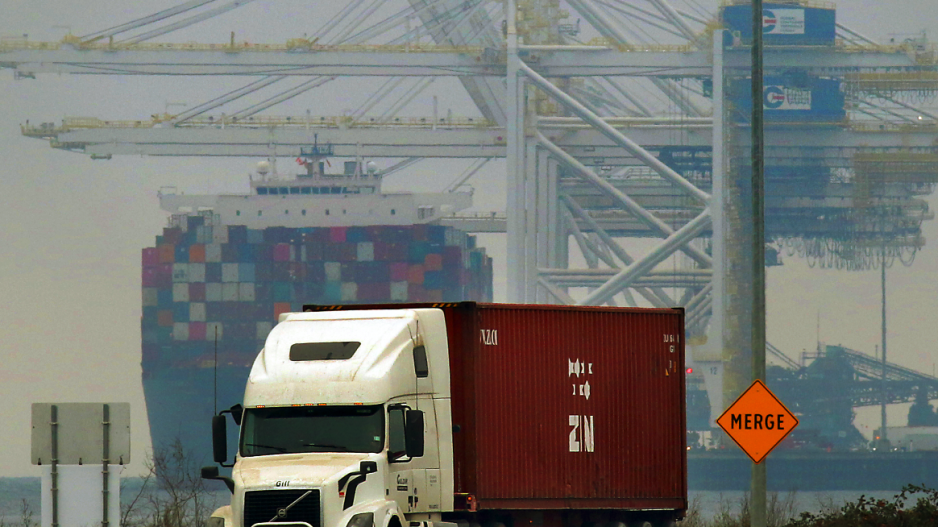A Vancouver-based container cargo terminal company is petitioning the Federal Court to rule on a multibillion-dollar landlord-tenant dispute over competing proposals to expand container cargo handling capacity
GCT Canada Ltd. Partnership filed an application March 28 seeking a judicial review of the Vancouver Fraser Port Authority’s (VFPA) refusal to process the company’s preliminary project inquiry to expand its GCT Deltaport container terminal.
In a separate application, GCT wants the court to prohibit a federal environmental review panel appointed by the Canadian Environmental Assessment Agency from holding a May 14 public hearing into the VFPA’s $3 billion Terminal 2 project.
The applications claim the VFPA has failed to provide the information required to justify Terminal 2 and is pursuing the project based on flawed data and a biased rationale.
The VFPA is GCT’s landlord at the company’s GCT Deltaport terminal at Roberts Bank and its Vanterm container terminal in Vancouver.
In its Federal Court applications, GCT claims the VFPA rejected the company’s request to process its preliminary project inquiry to add a fourth container berth at GCT Deltaport (DP4) because the port authority is biased in
In a February 29 letter to GCT, the VFPA’s Peter Xotta pointed out that Fisheries and Oceans Canada “has prohibited further land reclamation inland from Deltaport, due to environmental sensitivity.”
The VFPA’s vice-president of planning and operations also stated that adding a fourth container berth at Deltaport would “mean one terminal operator would control a significant majority of the market for container services.”
Healthy competition, he wrote, is needed to ensure that port container shipping customers continue “to pay reasonable rates for reliable service.”
Aside from those two major reasons for rejecting the DP4 plan, Xotta states that the VFPA’s Terminal 2 “is our preferred project for expansion of capacity at Roberts Bank” and that even if DP4 were to receive the necessary environmental and regulatory approvals, it could “only be considered as subsequent and incremental to the [Terminal 2] project.”
Terminal 2 is a major VFPA financial gamble. Price tag for the three-berth container terminal is estimated at between $2 billion and $3 billion and requires the creation of a 108-hectare industrial land mass immediately west of GCT Deltaport in deeper water away from
It would add an estimated add 2.4 million 20-foot-equivalent units (TEUs) to the port’s annual container handling capacity.
Terminal 2, originally proposed in 2003, has been slowly moving through its latest round of environmental and other reviews for approximately six years.
Meanwhile, with an estimated $1 billion price tag, DP4 would add roughly two million TEUs to GCT Deltaport’s annual capacity, which is currently 2.4 million TEUs.
GCT argues that DP4 would provide 80% of Terminal 2’s container capacity increase at a much reduced cost and deliver a more incremental response to the projected rise in cargo traffic and result in half the hectares of habitat lost from filling and dredging that Terminal 2 would require.
The proponents of both projects agree that transpacific container traffic to Canada’s West Coast will continue to grow significantly over the next two decades. The Port of Vancouver handled 3.4 million TEUs in 2018. That number is projected to jump to anywhere between 6.7 million and 9.7 million TEUs annually over the next 20 years.
But they don’t agree on the most efficient and cost-effective way to meet that projected growth, given the rapidly changing nature of trade on the transpacific and other major shipping routes.
There is also GCT’s complaint that the VFPA, as Terminal 2’s developer and promoter, is biased in
Its Federal Court applications are seeking to overturn the environmental review panel’s decision to allow Terminal 2 to proceed to a public hearing on May 14 and the VFPA’s refusal to process GCT’s preliminary permit inquiry for DP4.
@timothyrenshaw




